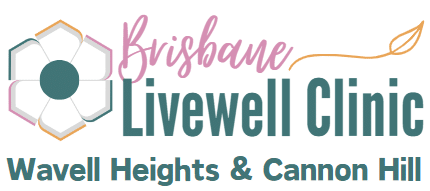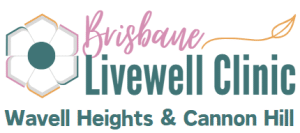Understanding Bowen Therapy
Bowen therapy is a non-invasive treatment that aims to promote healing and relieve pain by using gentle, rolling movements on specific areas of the body. This therapy is safe for people of all ages, from newborns to the elderly, including expectant mothers.
What is Bowen Therapy?
Bowen therapy, also known as the Bowen technique, was developed by Tom Bowen in the 1950s. It involves a series of precise and gentle movements performed by a trained therapist. These movements are applied to specific points on the body, stimulating the muscles, connective tissues, and energy flow.
Bowen therapy aims to activate the body's natural healing mechanisms, assisting in pain relief and promoting overall well-being. It is important to note that Bowen therapy is not a replacement for visits to a qualified medical doctor. It is best used as a complementary therapy alongside traditional medical care.
Safety of Bowen Therapy
Bowen therapy is generally considered safe for everyone, from newborns to older adults. It is a non-invasive therapy that does not require drugs or needles. This makes it a safe option for individuals who may have concerns or sensitivities to certain medical interventions.
While there are no contraindications that would prevent a person from receiving Bowen therapy sessions, there are a few procedures that may be contraindicated in certain circumstances. It is important to consult with a qualified Bowen therapist to discuss any specific concerns or conditions that may affect your suitability for this therapy (Bowen Hands to Heal).
When it comes to potential side effects, Bowen therapy is generally non-invasive and not likely to cause major side effects. However, it is recommended to avoid other muscle-manipulation therapies for at least 1 week after a Bowen therapy session to allow the body to adjust. This precautionary measure helps ensure optimal results and minimize any potential risks.
In conclusion, Bowen therapy is a safe and gentle therapy that can be beneficial for a wide range of individuals. However, it is always important to consult with a qualified Bowen therapist and communicate any specific health concerns or conditions before undergoing any treatment. This ensures that the therapy is tailored to your individual needs and performed in the safest and most effective manner possible.
Effectiveness of Bowen Therapy
When considering Bowen therapy as a potential treatment for your injuries or physical pain, it's important to understand its effectiveness. Research studies have been conducted to evaluate the benefits and outcomes of Bowen therapy, shedding light on its potential as a therapeutic option.
Research Studies on Bowen Therapy
In a 2020 study focused on Bowen therapy for lower back pain, researchers found that participants experienced a short-term reduction in pain compared with a control group. This suggests that Bowen therapy may provide temporary relief for individuals suffering from lower back pain.
Another study conducted in 2018 explored the effects of Bowen therapy on back pain. The results showed that approximately 66% of participants reported very good results following their third session of Bowen therapy. This indicates that Bowen therapy may have positive effects on back pain management.
Furthermore, a study published by the National Center for Biotechnology Information (NCBI) examined the effectiveness of Bowenwork, a specific type of Bowen therapy, for migraine and neck pain relief. The study revealed that Bowenwork was effective in providing relief for a chronic migraineur, leading to the cessation of migraines, neck pain, and reduced analgesic consumption. Additionally, the client experienced improvements in well-being and activity function.
Benefits of Bowen Therapy
Proponents of Bowen therapy report positive results from the therapy, and it is considered safe for individuals of all ages, from newborns to older adults. While existing research provides mixed results, many studies show predominantly positive outcomes. However, more research is needed to determine the full extent of its effectiveness.
Bowen therapy is often sought after for its potential benefits, which may include:
- Temporary relief from lower back pain
- Alleviation of back pain
- Reduction in migraine frequency and severity
- Relief from neck pain
- Improved well-being and activity function
It's important to note that individual experiences with Bowen therapy may vary, and it is always recommended to consult with a qualified Bowen therapist or healthcare professional to determine if Bowen therapy is suitable for your specific condition.
As the field of Bowen therapy continues to evolve, future research studies will provide further insights into its effectiveness and expand our understanding of its potential benefits. If you're considering Bowen therapy, it's essential to consult with a professional Bowen therapist who can assess your individual needs and provide personalized treatment.
Considerations for Bowen Therapy
When considering Bowen Therapy as a treatment option, it's important to understand who can benefit from this therapy and the precautions and contraindications that may apply.
Who Can Benefit from Bowen Therapy?
One of the advantages of Bowen Therapy is its versatility in addressing a wide range of conditions and symptoms. It is a non-invasive therapy that is generally safe for individuals of all ages, from newborns to older adults, including expectant mothers. Whether you are experiencing acute or chronic pain, injury, or seeking general wellness, Bowen Therapy may be able to assist you in your journey towards healing and relief.
Some of the common conditions that people seek Bowen Therapy for include:
- Musculoskeletal issues such as back pain, neck pain, and joint pain.
- Sports injuries and repetitive strain injuries.
- Headaches and migraines.
- Respiratory conditions like asthma.
- Digestive disorders.
- Stress, anxiety, and tension.
It's important to note that Bowen Therapy is not a replacement for medical treatment. If you have any underlying medical conditions or concerns, it's advisable to consult with your healthcare provider to determine if Bowen Therapy is suitable for you.
Precautions and Contraindications
Bowen Therapy is generally considered safe for everyone, with no specific contraindications that would prevent a person from receiving Bowen sessions. However, as with any therapeutic intervention, there are a few precautions and considerations to keep in mind:
- If you have any open wounds, cuts, or skin infections in the areas to be treated, it's important to inform your Bowen therapist. They may need to modify the treatment plan or avoid the affected areas until they have healed.
- If you have a history of blood clots or are currently taking blood-thinning medications, it's crucial to discuss this with your healthcare provider and Bowen therapist. They can provide guidance on the appropriate course of action.
- If you have a history of cancer, it's important to consult with your healthcare provider to determine if Bowen Therapy is suitable for you, especially if you are currently undergoing treatment or in remission.
It's important to communicate openly with your Bowen therapist about any medical conditions, medications, or concerns you may have. They can provide personalized advice and adapt the treatment to your specific needs.
Remember, the safety and effectiveness of Bowen Therapy rely on the expertise of the Bowen therapist administering the treatment. It is essential to seek treatment from a qualified and experienced professional to ensure the best possible outcomes.
While Bowen Therapy is generally considered safe, individual experiences may vary. If you have any concerns or experience any adverse effects during or after treatment, it's important to discuss them with your Bowen therapist or healthcare provider.
In the next sections, we will explore the specific techniques involved in Bowen Therapy and the potential side effects and safety measures associated with this therapy.
Exploring Bowen Therapy Techniques
Bowen therapy employs specific techniques and moves to facilitate the healing process. Let's take a closer look at the two primary aspects of Bowen therapy techniques: Bowen moves and the integration of Bowen therapy.
Bowen Moves and Procedures
Bowen therapy sessions typically involve gentle, precise pressure applied to the treatment area using the therapist's thumbs and fingers. These movements are known as Bowen moves. Each move consists of a series of rolling motions over specific anatomical locations, including the skin, fascia, muscles, tendons, and ligaments. The purpose of these moves is to stimulate the body's proprioceptor pathways, spinal arc reflexes, and central, peripheral, and autonomic nervous systems to reset dysfunctional soft-tissue tension patterns (NCBI).
During a Bowen therapy session, the therapist will perform a sequence of moves, followed by a 2–5 minute rest period. This rest period allows the body to integrate the signals provided by the Bowen moves, promoting self-regulation and healing. The number of sessions needed to experience the full benefits of Bowen therapy may vary, typically ranging from one to three sessions (Medical News Today).
The Bowen moves are gentle and non-invasive, making them suitable for individuals of all ages, from infants to the elderly. The therapy is generally well-tolerated, with minimal discomfort reported by most recipients. While some muscle manipulations, known as "cross-fibre muscle manipulations," may be carried out during the session, they are performed with care and are not aggressive in nature.
Integration of Bowen Therapy
One of the unique aspects of Bowen therapy is its ability to work in conjunction with other therapeutic modalities. Bowen therapy can be used in an appropriate sequence with a variety of therapies, allowing sufficient time for the Bowen moves to take effect. This integrative approach enhances the overall healing process and may result in improved outcomes for the recipient.
Bowen therapy also complements conventional medical treatments and can be safely used alongside medications. It has no negative interactions with medications and may even lead to a reduced need for medication over the long term. However, as with any form of therapy, it is essential to inform your healthcare provider or Bowen therapist about any medications you are taking to ensure safe and effective treatment.
By utilizing Bowen moves and integrating Bowen therapy with other approaches, the therapy aims to provide deep relaxation, pain relief, and a reduction in inflammation. Bowen practitioners believe that the therapy has the potential to work on a deep cellular level, releasing toxins and addressing the physical, chemical, emotional, and mental aspects of each individual. These potential benefits extend not only to human patients but also to animals, such as horses, with reported amazing results.
It's important to consult a qualified and experienced Bowen therapist who can assess your specific needs and tailor the treatment accordingly. They will guide you through the appropriate Bowen moves and techniques based on your individual condition, ensuring a safe and effective therapeutic experience.
Side Effects and Risks
When considering any form of therapy, it's important to be aware of potential side effects and risks. While Bowen therapy is generally considered safe for individuals of all ages, it's still essential to understand the possible effects it may have on your body.
Potential Side Effects of Bowen Therapy
The reported side effects of Bowen therapy are generally limited. The therapy itself is noninvasive and does not involve the use of drugs or needles. This makes it a safe option for individuals of all ages, including newborns and the elderly (Medical News Today). However, it's worth noting that individual experiences may vary.
Some individuals may experience temporary discomfort or mild reactions following a Bowen therapy session. These can include muscle soreness, fatigue, or changes in sleep patterns. These effects are typically short-lived and often indicate that the body is adjusting to the therapy. If you experience any persistent or concerning side effects, it is recommended to consult with a healthcare professional to address your concerns.
Safety Measures and Recommendations
To ensure a safe and effective Bowen therapy session, it's important to follow certain safety measures and recommendations. Here are a few guidelines to consider:
Choose a qualified therapist: When seeking Bowen therapy, it's crucial to select a trained and qualified therapist who has undergone proper certification. This helps ensure that you receive the treatment from a knowledgeable professional who follows appropriate protocols.
Provide a complete medical history: Before starting Bowen therapy, it's important to disclose your complete medical history and any underlying health conditions to your therapist. This information allows them to tailor the treatment to your specific needs and take any necessary precautions.
Follow post-session recommendations: After a Bowen therapy session, some therapists recommend avoiding other muscle-manipulation therapies for about a week to allow your body to properly adjust (Medical News Today). This helps prevent any potential interference with the effects of the Bowen therapy and supports the body's natural healing process.
Communicate with your therapist: During the session, if you experience any discomfort or have concerns, it's important to communicate openly with your therapist. They can adjust the treatment accordingly or address any questions or uncertainties you may have.
It's important to note that while Bowen therapy is generally safe, individual responses may vary. If you have any specific health concerns or are unsure about whether Bowen therapy is suitable for you, it's recommended to consult with a healthcare professional or your primary care provider.
By understanding the potential side effects and following the necessary safety measures, you can make an informed decision about the suitability of Bowen therapy for your individual needs. Remember to discuss any questions or concerns with a qualified therapist to ensure the best possible experience and outcome.
Future of Bowen Therapy
As with any therapeutic modality, the future of Bowen therapy lies in ongoing research and advancements in techniques. While there is limited scientific data available regarding the effectiveness of Bowen therapy, some studies have reported positive outcomes. However, more research is needed to draw definitive conclusions about its benefits.
Research Needs in Bowen Therapy
To further solidify the scientific foundation of Bowen therapy, additional high-quality research studies are required. These studies should focus on evaluating the efficacy of Bowen therapy in different conditions, such as pain management. By conducting larger-scale studies with rigorous methodologies, researchers can gather more data and draw conclusive evidence on the therapy's effectiveness.
Research efforts should also investigate the potential benefits of Bowen therapy in specific areas, such as migraine treatment. While a study on Bowenwork's efficacy for migraine treatment showed promising results on a small scale, further research on larger populations is necessary to validate these findings and establish its effectiveness.
Advancements in Bowen Therapy Techniques
Advancements in Bowen therapy techniques can also contribute to its future development and effectiveness. As practitioners gain more experience and understanding of the therapy, they can refine and modify the Bowen moves and procedures to optimize outcomes.
Additionally, continued professional development and training for Bowen therapists are vital for staying updated with the latest techniques and approaches. As new insights and knowledge emerge, practitioners can incorporate these advancements into their practice, enhancing the quality of care provided to clients.
It is important to note that while Bowen therapy holds promise as a complementary therapy, it should not be considered a substitute for professional medical advice or treatment. It is always recommended to consult with a qualified healthcare professional for proper diagnosis and guidance on appropriate treatment options.
By prioritizing research and embracing advancements in techniques, the future of Bowen therapy can continue to evolve and potentially provide valuable contributions to the field of complementary healthcare.
Last Updated on 15 June 2024 by Brisbane Livewell Clinic









